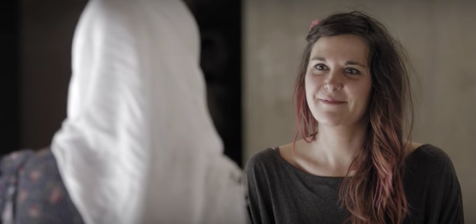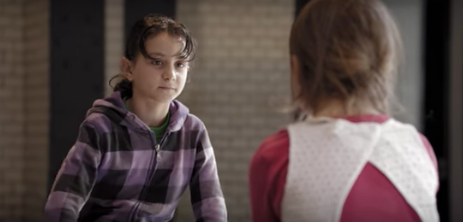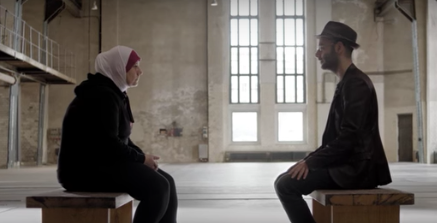A moving video experiment reveals Europeans and newly-arrived refugees bridging the emotional divide.
Look Beyond Borders is based on a theory developed by psychologist Arthur Aron in 1997, which suggests that four minutes of uninterrupted eye contact increases intimacy.
Amnesty International Poland and Polish ad agency DDB&Tribal applied the method to the refugee crisis, asking arrivals from Syria and Somalia who have been in Europe for less than a year to literally gaze into the eyes of people from Belgium, Italy, Germany, Poland and the UK.

Draginja Nadażdin, Director of Amnesty International Poland, said: “It takes a heart of stone to watch this video without shedding a tear. Today, when the world appears rife with division and conflict, it is always worthwhile to look at everything from another person’s perspective.
“Too often, what gets lost in the numbers and headlines is the suffering of actual people, who, like us, have families, friends, their own stories, dreams and goals. What if we stopped for just a moment and looked at who they really are?
“Borders exist between countries, not people. And it is imperative that our governments start putting people before borders and their own short-term political gain.”

The five-minute video, filmed in a warehouse near Berlin’s Cold War-era crossing Checkpoint Charlie last month, shows natural, spontaneous reactions between people meeting for the first time, with overwhelmingly positive results.
Hanna Waśko, from ad agency Big Picture which is helping with distribution of the video, said:
“We conducted the experiment in Berlin because the city symbolises the overcoming of divisions. In that sense, the most important thing is to give people time to understand each other better and get to know one another.”

It was released on Wednesday, the same day German chancellor Angela Merkel said the Cabinet has agreed on a package of measures that are a "milestone" in integrating migrants.
Germany registered around 1.1 million irregular migrants in 2015, most of them refugees from Syria, Iraq and Afghanistan. But with the closure of the Balkans migration route from Greece to Germany, the number of migrants coming in has dropped dramatically this year. So attention has now shifted to integrating the refugees, who will most likely spend several years, if not their whole lives, in Germany.
The authorities are focusing on having migrants learn the language and get jobs. The German government has promised to introduce subsidised workplaces earmarked for refugees.
Earlier this month German native Lasse Landt set up a project in Berlin to help refugees and locals meet up.
The startup consultant told the Associated Press: “"It was all over the media, every day on the talk shows you had people talking about the refugee crisis. I had never seen a refugee," said Landt. "I just wanted to find out if it was real."
Together with Khaled Alaswad, a 25-year-old Syrian he met at a computer coding class for migrants in Berlin, Landt started Let's integrate! , which allows users to pick a time and location and set up a "date."
Let's integrate! was launched on 1 May and so far at least a dozen meetings have taken place. More Germans have signed up than migrants, so organizers are putting up posters in refugee homes to try to even out the numbers.
On 19 May, Amnesty International’s Refugees Welcome Index showed that 80% of people surveyed across 27 countries said they would let a refugee live in their country, 10% in their own home. The general public in China, Germany and the UK came out as the most accepting of refugees.
In Germany, where the video was filmed, 96% said they would let refugees live in their country.
Let's inegrate! is free but only available in Berlin, though there are plans to expand it to other German cities soon, including those where migrants have received a less-than-enthusiastic reception. Fears about migrants have been stoked by far-right and nationalist groups, who have staged hundreds of rallies near refugee homes or planned shelters.
To identify each other at the meeting point, people are asked to hold up their index finger and thumb to make an L and I - for Let's integrate - a bit like a secret hand signal.
